Chinese New Year
| Chinese New Year | |
|---|---|
| Also called | Lunar New Year, Spring Festival |
| Observed by | Chinese communities worldwide[1] |
| Type | Cultural, Religious (Buddhist, Taoist, Confucian) |
| Significance | The first day of the Chinese calendar (lunisolar calendar) |
| 2011 date | February 3 |
| 2012 date | January 23 |
| Celebrations | Dragon dances/Lion dances, fireworks, family gathering, family meal, visiting friends and relatives (拜年), giving red envelopes, decorating with duilian (對聯). |
| Related to | Lantern Festival, which concludes the celebration of the New Year. Mongol New Year (Tsagaan Sar), Tibetan New Year (Losar), Japanese New Year (Shōgatsu), Korean New Year (Seollal), Vietnamese New Year (Tết) |
| Chinese New Year | |||
|---|---|---|---|
| Traditional Chinese | 農曆新年 | ||
| Simplified Chinese | 农历新年 | ||
| Literal meaning | Agrarian Calendar New Year | ||
| |||
| Spring Festival | |||
| Traditional Chinese | 春節 | ||
| Simplified Chinese | 春节 | ||
| |||
Chinese New Year is the longest and most important festivity in the Chinese calendar. The origin of Chinese New Year is itself centuries old and gains significance because of several myths and traditions. Chinese New Year is celebrated in countries and territories with significant Chinese populations, such as Mainland China, Hong Kong,[2] Indonesia, Macau, Malaysia, Philippines, Singapore,[3] Taiwan, Thailand, and also in Chinatowns elsewhere. Chinese New Year is considered a major holiday for the Chinese and has had influence on the lunar new year celebrations of its geographic neighbors. These include Korean (Seollal), Bhutanese (Losar), and Vietnamese cultures.
Within China, regional customs and traditions concerning the celebration of the Chinese new year vary widely. People will pour out their money to buy presents, decoration, material, food, and clothing. It is also the tradition that every family thoroughly cleans the house to sweep away any ill-fortune in hopes to make way for good incoming luck. Windows and doors will be decorated with red colour paper-cuts and couplets with popular themes of "good fortune" or "happiness", "wealth", and "longevity". On the Eve of Chinese New Year, supper is a feast with families. Food will include such items as pigs, ducks, chicken and sweet delicacies. The family will end the night with firecrackers. Early the next morning, children will greet their parents by wishing them a healthy and happy new year, and receive money in red paper envelopes. The Chinese New Year tradition is to reconcile, forget all grudges and sincerely wish peace and happiness for everyone.
Although the Chinese calendar traditionally does not use continuously numbered years, outside China its years are often numbered from the reign of the Yellow Emperor. But at least three different years numbered 1 are now used by various scholars, making the year beginning in 2012 AD the "Chinese Year" 4710, 4709, or 4649.[4]
Contents[hide] |
Dates
Main article: Chinese calendar
| Animal | Branch | New Year dates | ||
|---|---|---|---|---|
| 鼠 Rat | 子 Zǐ | February 19, 1996 | February 7, 2008 | January 25, 2020 |
| 牛 Ox | 丑 Chǒu | February 7, 1997 | January 26, 2009 | February 12, 2021 |
| 虎 Tiger | 寅 Yín | January 28, 1998 | February 14, 2010 | February 1, 2022 |
| 兔 Rabbit | 卯 Mǎo | February 16, 1999 | February 3, 2011 | January 22, 2023 |
| 龍 Dragon | 辰 Chen | February 5, 2000 | January 23, 2012 | February 10, 2024 |
| 蛇 Snake | 巳 Sì | January 24, 2001 | February 10, 2013 | January 29, 2025 |
| 馬 Horse | 午 Wǔ | February 12, 2002 | January 31, 2014 | February 17, 2026 |
| 羊 Goat | 未 Wèi | February 1, 2003 | February 19, 2015 | February 7, 2027 |
| 猴 Monkey | 申 Shēn | January 22, 2004 | February 8, 2016 | January 27, 2028 |
| 雞 Rooster | 酉 Yǒu | February 9, 2005 | January 28, 2017 | February 13, 2029 |
| 狗 Dog | 戌 Xū | January 29, 2006 | February 16, 2018 | February 3, 2030 |
| 豬 Pig | 亥 Hài | February 18, 2007 | February 5, 2019 | January 23, 2031 |
In the Gregorian calendar, Chinese New Year falls on different dates each year, a date between January 21 and February 20. In the Chinese calendar, winter solstice must occur in the 11th month, which means that Chinese New Year usually falls on the second new moon after the winter solstice (rarely the third if an intercalary month intervenes). In traditional Chinese Culture, lichun is a solar term marking the start of spring, which occurs about February 4.
The dates for Chinese New Year from 1996 to 2031 (in the Gregorian calendar) are at the left, along with the year's presiding animal zodiac and its earthly branch. The names of the earthly branches have no English counterparts and are not the Chinese translations of the animals. Alongside the 12-year cycle of the animal zodiac there is a 10-year cycle of heavenly stems. Each of the ten heavenly stems is associated with one of the five elements of Chinese astrology, namely: Wood, Fire, Earth, Metal, and Water. The elements are rotated every two years while a yin and yang association alternates every year. The elements are thus distinguished: Yang Wood, Yin Wood, Yang Fire, Yin Fire, etc. These produce a combined cycle that repeats every 60 years. For example, the year of the Yang Fire Rat occurred in 1936 and in 1996, 60 years apart.[5]
Many confuse their Chinese birth-year with their Gregorian birth-year. As the Chinese New Year starts in late January to mid-February, the Chinese year dates from January 1 until that day in the new Gregorian year remain unchanged from the previous Gregorian year. For example, the 1989 year of the snake began on February 6, 1989. The year 1990 is considered by some people to be the year of the horse. However, the 1989 year of the snake officially ended on January 26, 1990. This means that anyone born from January 1 to January 25, 1990 was actually born in the year of the snake rather than the year of the horse. Many online Chinese Sign calculators do not account for the non-alignment of the two calendars, using Gregorian-calendar years rather than official Chinese New Year dates.
One scheme of continuously numbered Chinese-calendar years assigns 4708 to the year beginning February 3, 2011, but this is not universally accepted; the calendar is traditionally cyclical, not continuously numbered.
Mythology
According to tales and legends, the beginning of Chinese New Year started with the fight against a mythical beast called the Nian (Chinese: 年; pinyin: nián). Nian would come on the first day of New Year to eat livestock, crops, and even villagers, especially children. To protect themselves, the villagers would put food in front of their doors at the beginning of every year. It was believed that after the Nian ate the food they prepared, it wouldn’t attack any more people. One time, people saw that the Nian was scared away by a little child wearing red. The villagers then understood that the Nian was afraid of the colour red. Hence, every time when the New Year was about to come, the villagers would hang red lanterns and red spring scrolls on windows and doors. People also used firecrackers to frighten away the Nian. From then on, Nian never came to the village again. The Nian was eventually captured by Hongjun Laozu, an ancient Taoist monk. The Nian became Hongjun Laozu's mount.
Chinese New Year Public Holiday
Chinese New Year is observed as a public holiday in a number of countries and territories where a sizable Chinese population resides. Since Chinese New Year falls on different dates on the Gregorian calendar every year on different days of the week, some of these governments opt to shift working days in order to accommodate a longer public holiday. Also like many other countries in the world, a statutory holiday is added on the following work day when the New Year falls on a weekend.| Region | Description |
|---|---|
| Mainland China | New Year's Eve and the first two days. (Usually, the Saturday before and the Sunday after Chinese New Year are declared working days, and the 2 additionally gained holidays are added to the official 3 days of holiday, so that people have 7 consecutive days, including weekends, off.) |
| Hong Kong and Macau | The first three days. If one of the first three days is on a Sunday, Chinese New Year's Eve is celebrated as a public holiday. In the year 2010, the first day (February 14) is a Sunday and Chinese New Year's Eve (February 13) is consequently a public holiday. |
| Taiwan | The New Year's Eve and the first three days. |
| Christmas Island, Malaysia and Singapore | The first two days. If one of the days falls on a Sunday, the holiday is extended to three days. In 2010, the first day (February 14) is on a Sunday so celebration of the holiday is extended through Tuesday (February 16). Chinese New Year's Eve is usually a half-day holiday in Singapore. |
| Brunei, Indonesia and Philippines | The first day. If Sunday, it will be moved to Monday. If Friday (in Brunei), it will be moved to Saturday. |
| Other | A few countries around the world regularly issue postage stamps and numismatic coins to commemorate Chinese New Year. Although Chinese New Year is not institutionalized as public holiday, these countries recognize the significant number of their citizens who are of Chinese origin. The countries and territories that sometimes do so include Australia, Canada, France, New Zealand, the United States, and other countries. |
| “ | Red couplets and red lanterns are displayed on the door frames and light up the atmosphere. The air is filled with strong Chinese emotions. In stores in Beijing, Shanghai, Wuhan, and other cities, products of traditional Chinese style have started to lead fashion trend[s]. Buy yourself a Chinese-style coat, get your kids tiger-head hats and shoes, and decorate your home with some beautiful red Chinese knots, then you will have an authentic Chinese-style Spring Festival. | ” |
—Xinwen Lianbo, January 2001, quoted by Li Ren, Imagining China in the Era of Global Consumerism and Local Consciousness[7] | ||
Preceding days
On the eighth day of the lunar month prior to Chinese New Year, a traditional porridge known as làbāzhōu (臘八粥) is served in remembrance "of an ancient festival, called Là, that occurred shortly after the winter solstice"[8]. Là (臘月) is a term often associated with Chinese New Year as it refers to the sacrifices held in honor of the gods in the twelfth lunar month, hence the cured meats of Chinese New Year are known as làròu (臘肉). The porridge was prepared by the women of the household at first light, with the first bowl offered to the family's ancestors and the household deities. Every member of the family was then served a bowl, with leftovers distributed to relatives and friends.[9] It's still served as a special breakfast on this day in some Chinese homes.On the days immediately before the New Year celebration, Chinese families give their home a thorough cleaning. There is a Cantonese saying "Wash away the dirt on ninyabaat" (年廿八,洗邋遢), but the practice is not restricted to nin'ya'baat (年廿八, the 28th day of month 12). It is believed the cleaning sweeps away the bad luck of the preceding year and makes their homes ready for good luck. Brooms and dust pans are put away on the first day so that the newly arrived good luck cannot be swept away. Some people give their homes, doors and window-frames a new coat of red paint; decorators and paper-hangers do a year-end rush of business prior to Chinese New Year[10]. Homes are often decorated with paper cutouts of Chinese auspicious phrases and couplets. Purchasing new clothing, shoes, and receiving a hair-cut also symbolize a fresh start. Businesses are expected to pay off all the debts outstanding for the year before the new year eve, extending to debt of gratitudes. As such, it is a common practice to send gifts and rice to close business associates, and extended family members.
In many households where Buddhism or Taoism is prevalent, home altars and statues are cleaned thoroughly, and altars that were adorned with decorations from the previous year are taken down and burned a week before the new year starts, to be replaced with new decorations. Taoists (and Buddhists to a lesser extent) will also "send gods" (送神), an example would be burning a paper effigy of Zao Jun the Kitchen God, the recorder of family functions. This is done so that the Kitchen God can report to the Jade Emperor of the family household's transgressions and good deeds. Families often offer sweet foods (such as candy) in order to "bribe" the deities into reporting good things about the family.
The biggest event of any Chinese New Year's Eve is the Reunion Dinner. A dish consisting of fish will appear on the tables of Chinese families. It is for display for the New Year's Eve dinner. This meal is comparable to Christmas dinner in the West. In northern China, it is customary to make dumplings (jiaozi, 餃子) after dinner to eat around midnight. Dumplings symbolize wealth because their shape resembles a Chinese tael. By contrast, in the South, it is customary to make a glutinous new year cake (niangao, 年糕) and send pieces of it as gifts to relatives and friends in the coming days of the new year. Niángāo [Pinyin] literally means "new year cake" with a homophonous meaning of "increasingly prosperous year in year out".[11] After dinner, some families go to local temples hours before the new year begins to pray for a prosperous new year by lighting the first incense of the year; however in modern practice, many households hold parties and even hold a countdown to the new year. Traditionally, firecrackers were once lit to scare away evil spirits with the household doors sealed, not to be reopened until the new morning in a ritual called "opening the door of fortune" (kāicáimén, 開財門).[12] Beginning in 1982, the CCTV New Year's Gala was broadcast four hours before the start of the New Year
First day
The first day is for the welcoming of the deities of the heavens and earth, officially beginning at midnight. Many people, especially Buddhists, abstain from meat consumption on the first day because it is believed that this will ensure longevity for them. Some consider lighting fires and using knives to be bad luck on New Year's Day, so all food to be consumed is cooked the days before. On this day, it is considered bad luck to clean.
Most importantly, the first day of Chinese New Year is a time to honor one's elders and families visit the oldest and most senior members of their extended families, usually their parents, grandparents and great-grandparents.
For Buddhists, the first day is also the birthday of Maitreya Bodhisattva (better known as the more familiar Budai Luohan), the Buddha-to-be. People also abstain from killing animals.
Some families may invite a lion dance troupe as a symbolic ritual to usher in the Chinese New Year as well as to evict bad spirits from the premises. Members of the family who are married also give red envelopes containing cash to junior members of the family, mostly children and teenagers. Business managers also give bonuses through red envelopes to employees for good luck and wealth.
While fireworks and firecrackers are traditionally very popular, some regions have banned them due to concerns over fire hazards, which have resulted in increased number of fires around New Years and challenged municipal fire departments' work capacity. For this reason, various city governments (e.g., Hong Kong, and Beijing, for a number of years) issued bans over fireworks and firecrackers in certain premises of the city. As a substitute, large-scale fireworks have been launched by governments in such cities as Hong Kong.
Second day
The second day of the Chinese New Year, known as kāinián (开年, "beginning of the year")[13], was when married daughters visited their birth parents, relatives and close friends. (Traditionally, married daughters often didn't have the opportunity to visit their birth families frequently.)
It is also the God of Wealth's birthday. During the days of imperial China, "beggars and other unemployed people circulate[d] from family to family, carrying a picture [of the God of Wealth] shouting, "Cai Shen dao!" [The God of Wealth has come!]."[14] Householders would respond with "lucky money" to reward the messengers. Business people of the Cantonese dialect group will hold a 'Hoi Nin' prayer to start their business on the 2nd day of Chinese New Year so they will be blessed with good luck and prosperity in their business for the year.
Some believe that the second day is also the birthday of all dogs and remember them with special treats.
[edit] Third day
The third day is known as chì kǒu (赤口), directly translated as "red mouth". chì kǒu is also called chì gǒu rì (赤狗日). chì gǒu means "the God of Blazing Wrath" (熛怒之神). It is generally accepted that it is not a good day to socialize or visit your relatives and friends.[15][16]. Hakka villagers in rural Hong Kong in the 1960s called it the Day of the Poor Devil and believed everyone should stay at home.[17] This is also considered a propitious day to visit the temple of the God of Wealth and have one's future told.Fourth day
In those communities that celebrate Chinese New Year for only two or three days, the fourth day is when corporate "spring dinners" kick off and business returns to norm Fifth dayIn northern Mainland China, people eat jiǎo zi (simplified Chinese: 饺子; traditional Chinese: 餃子), or dumplings on the morning of Po Wu (破五). In Taiwan, businesses traditionally re-open on the next day (the sixth day), accompanied by firecrackers.
It is also common in China that on the 5th day people will shoot off firecrackers in the attempt to get Guan Yu's attention, thus ensuring his favor and good fortune for the new year
Seventh day
The seventh day, traditionally known as rénrì (人日, the common man's birthday), the day when everyone grows one year older. In some overseas Chinese communities in Southeast Asia, such as Malaysia and Singapore, it is also the day when tossed raw fish salad, yusheng, is eaten for continued wealth and prosperity.
For many Chinese Buddhists, this is another day to avoid meat, the seventh day commemorating the birth of Sakra, lord of the devas in Buddhist cosmology who is analogous to the Jade Emperor.

Chinese New Year's celebrations, on the eighth day, in the Vancouver suburb of Richmond, British Columbia, Canada.
Eighth day
Another family dinner is held to celebrate the eve of the birth of the Jade Emperor. However, everybody should be back to work by the eighth day. All government agencies and business will stop celebrating by the eighth day. Store owners will host a lunch/dinner with their employees, thanking their employees for the work they have done for the whole year.Ninth day
The ninth day of the New Year is a day for Chinese to offer prayers to the Jade Emperor of Heaven (天公) in the Taoist Pantheon. The ninth day is traditionally the birthday of the Jade Emperor. This day is especially important to Hokkiens. Come midnight of the eighth day of the new year, Hokkiens will offer thanks giving prayers to the Emperor of Heaven. Offerings will include sugarcane as it was the sugarcane that had protected the Hokkiens from certain extermination generations ago. Incense, tea, fruit, vegetarian food or roast pig, and gold paper is served as a customary protocol for paying respect to an honored person.[edit] Tenth day
The Jade Emperor's party is also celebrated on this day. Eleventh through twelfth dayThirteenth day
On the 13th day people will eat pure vegetarian food to clean out their stomach due to consuming too much food over the last two weeks.This day is dedicated to the General Guan Yu, also known as the Chinese God of War. Guan Yu was born in the Han dynasty and is considered the greatest general in Chinese history. He represents loyalty, strength, truth, and justice. According to history, he was tricked by the enemy and was beheaded.
Almost every organization and business in China will pray to Guan Yu on this day. Before his life ended, Guan Yu had won over one hundred battles and that is a goal that all businesses in China want to accomplish. In a way, people look at him as the God of Wealth or the God of Success.
Fifteenth day
The fifteenth day of the new year is celebrated as Yuan Xiao Festival/Yuánxiāojié (元宵节), aka Shang Yuan Festival/Shàngyuánjié (上元节) or the Lantern Festival (otherwise known as Chap Goh Mei Chinese: 十五暝; pinyin: shí wǔ míng; literally "the fifteen night" in Fujian dialect). Rice dumplings tangyuan (simplified Chinese: 汤圆; traditional Chinese: 湯圓; pinyin: tāngyuán), a sweet glutinous rice ball brewed in a soup, are eaten this day. Candles are lit outside houses as a way to guide wayward spirits home. This day is celebrated as the Lantern Festival, and families walk the street carrying lighted lanterns.In Malaysia and Singapore, this day is celebrated by individuals seeking for a love partner, a different version of Valentine's Day.[18] Normally, single women would write their contact number on mandarin oranges and throw it in a river or a lake while single men would collect them and eat the oranges. The taste is an indication of their possible love: sweet represents a good fate while sour represents a bad fate.
This day often marks the end of the Chinese New Year festivities.
Cuisine
A reunion dinner is held on New Year's Eve where members of the family gather for the celebration. The venue will usually be in or near the home of the most senior member of the family. The New Year's Eve dinner is very sumptuous and traditionally includes chicken and fish. In some areas, fish (simplified Chinese: 鱼; traditional Chinese: 魚; pinyin: yú) is included, but not eaten completely (and the remainder is stored overnight), as the Chinese phrase "may there be surpluses every year" (simplified Chinese: 年年有余; traditional Chinese: 年年有餘; pinyin: nián nián yǒu yú) sounds the same as "may there be fish every year."
In mainland China, many families will banter whilst watching the CCTV New Year's Gala in the hours before midnight.
Red packets for the immediate family are sometimes distributed during the reunion dinner. These packets often contain money in certain numbers that reflect good luck and honorability. Several foods are consumed to usher in wealth, happiness, and good fortune. Several of the Chinese food names are homophones for words that also mean good things.
| Food items | |
|---|---|
| Name | Description |
| Buddha's delight (simplified Chinese: 罗汉斋; traditional Chinese: 羅漢齋; pinyin: luó hàn zhāi) | An elaborate vegetarian dish served by Chinese families on the eve and the first day of the New Year. A type of black hair-like algae, pronounced "fat choy" in Cantonese, is also featured in the dish for its name, which sounds like "prosperity". Hakkas usually serve kiu nyuk (Chinese: 扣肉; pinyin: kòu ròu) and ngiong teu fu. |
| Fish | Is usually eaten or merely displayed on the eve of Chinese New Year. The pronunciation of fish (魚yú) makes it a homophone for "surpluses"(餘yú). |
| Jau gok (Chinese: 油角; pinyin: yóu jiăo) | The main Chinese new year dumpling. It is believed to resemble ancient Chinese gold ingots (simplified Chinese: 金元宝; traditional Chinese: 金元寶; pinyin: jīn yuán bǎo) |
| jiao zi (dumplings) (Chinese: 餃子) | Eaten traditionally in northern China because the preparation is similar to packaging luck inside the dumpling, which is later eaten. |
| Mandarin oranges | Mandarin oranges are the most popular and most abundant fruit during Chinese New Year – jin ju (Chinese: 金橘子; pinyin: jīn júzi) translation: golden tangerine/orange or kam (Chinese: 柑; pinyin: gān) in Cantonese. Also, the name gik (橘 jú) in Teochew dialect is a homophone of "luck" or "fortune" (吉 jí).[19] |
| Melon seed/Kwatji (Chinese: 瓜子; pinyin: guāzi) | Other variations include sunflower, pumpkin and other seeds. |
| Nian gao (Chinese: 年糕) | Most popular in eastern China (Jiangsu, Zhejiang and Shanghai) because its pronunciation is a homophone for "a more prosperous year (年高 lit. year high)". Nian gao is also popular in the Philippines because of its large Chinese population and is known as "tikoy" (Chinese: 甜粿, from Min Nan) there. Known as Chinese New Year pudding, nian gao is made up of glutinous rice flour, wheat starch, salt, water, and sugar. The colour of the sugar used determines the colour of the pudding (white or brown). |
| Noodles | Families may serve uncut noodles, which represent longevity and long life, though this practice is not limited to the new year. |
| Sweets | Sweets and similar dried fruit goods are stored in a red or black Chinese candy box. |
| Bakkwa (Chinese: 肉干; pinyin: ròu gān) | Chinese salty-sweet dried meat, akin to jerky, which is trimmed of the fat, sliced, marinated and then smoked for later consumption or as a gift. |
| Taro cakes (Chinese: 芋頭糕) | Made from the vegetable taro, the cakes are cut into squares and often fried. |
| Turnip cakes (Chinese: 蘿蔔糕) | A dish made of shredded radish and rice flour, usually fried and cut into small squares. |
| Yusheng or Yee sang (simplified Chinese: 鱼生; traditional Chinese: 魚生; pinyin: yú shēng) | Raw fish salad. Eating this salad is said to bring good luck. This dish is usually eaten on the seventh day of the New Year, but may also be eaten throughout the period. |
[edit] Practices
| This section needs additional citations for verification. Please help improve this article by adding citations to reliable sources. Unsourced material may be challenged and removed. (February 2011) |
Red envelopes
Traditionally, Red envelopes or red packets (Cantonese: lai sze or lai see) (利是, 利市 or 利事); (Mandarin: 'hóng bāo' (红包); Hokkien: 'ang pow' (POJ: âng-pau); Hakka: 'fung bao'; are passed out during the Chinese New Year's celebrations, from married couples or the elderly to unmarried juniors. It is also common for adults or young couples to give red packets to children. Red packets are also known as 壓歲錢/压岁钱 (Ya Sui Qian, which was evolved from 壓祟錢/压祟钱, literally, the money used to suppress or put down the evil spirit ) during this period.[20]
Red packets almost always contain money, usually varying from a couple of dollars to several hundred. Per custom, the amount of money in the red packets should be of even numbers, as odd numbers are associated with cash given during funerals (帛金: Bai Jin). The number 8 is considered lucky (for its homophone for "wealth"), and $8 is commonly found in the red envelopes in the US. The number six (六, liù) is also very lucky as it sounds like 'smooth' (流, liú), in the sense of having a smooth year. Sometimes chocolate coins are found in the red packets.
Odd and even numbers are determined by the first digit, rather than the last. Thirty and fifty, for example, are odd numbers, and are thus appropriate as funeral cash gifts. However, it is common and quite acceptable to have cash gifts in a red packet using a single bank note – with ten or fifty yuan bills used frequently.
The act of requesting for red packets is normally called (Mandarin): 讨紅包, 要利是. (Cantonese): 逗利是. A married person would not turn down such a request as it would mean that he or she would be "out of luck" in the new year.
The Japanese has a similar tradition of giving money during the New Year called Otoshidama.
[edit] Gift exchange
In addition to red envelopes, which are usually given from elder to younger, small gifts (usually of food or sweets) are also exchanged between friends or relatives (of different households) during Chinese New Year. Gifts are usually brought when visiting friends or relatives at their homes. Common gifts include fruits (typically oranges, and never pears), cakes, biscuits, chocolates, candies, or some other small gift.[21]Markets Markets or village fairs are set up as the New Year is approaching. These usually open-air markets feature new year related products such as flowers, toys, clothing, and even fireworks. It is convenient for people to buy gifts for their new year visits as well as their home decoration. In some places, the practice of shopping for the perfect plum tree is not dissimilar to the Western tradition of buying a Christmas tree.
Fireworks
Bamboo stems filled with gunpowder that were burnt to create small explosions were once used in ancient China to drive away evil spirits. In modern times, this method has eventually evolved into the use of firecrackers during the festive season. Firecrackers are usually strung on a long fused string so it can be hung down. Each firecracker is rolled up in red papers, as red is auspicious, with gunpowder in its core. Once ignited, the firecracker lets out a loud popping noise and, as they are usually strung together by the hundreds, the firecrackers are known for their deafening explosions that are thought to scare away evil spirits. See also Myths above. The burning of firecrackers also signifies a joyful time of year and has become an integral aspect of Chinese New Year celebrations
.
Firecracker ban The use of firecrackers, although a traditional part of celebration, has over the years led to many unfortunate outcomes. There have been reported incidents every year of users of fireworks being blinded, losing body parts, or suffering other grievous injuries, especially during the Chinese New Year season. Hence, many governments and authorities eventually enacted laws completely banning the use of firecrackers privately, primarily because of safety issues.
- Taiwan – Beginning 2008, firecrackers are banned in urban areas, but still allowed in rural areas.
- Mainland China – As of 2008, most urban areas in mainland China permit firecrackers. In the first three days of the traditional New Year, it is a tradition that people compete with each other by playing with firecrackers. However, many urban areas banned them in the 1990s. For example, they were banned in Beijing's urban districts from 1993 to 2005.[23] In 2004, 37 people were killed in a stampede when four million[24] people gathered for a rumoured Lantern Festival firework display in nearby Miyun.[25] Since the ban was lifted, the firecracker barrage has been tremendous. In Beijing, firecrackers are typically not allowed inside the 5th ring road. But this is overlooked by authorities for the holiday, provided there are no government buildings nearby; some residents in major cities look down on street-level fireworks from their tower blocks. Bans are rare in rural areas.
- Vietnam – 1996, fireworks were banned across the country because of its dangers.
- Hong Kong – Fireworks are banned for security reasons – some speculate a connection between firework use and the 1967 Leftist Riot. However, the government would put on a fireworks display in Victoria Harbour on the second day of the Chinese New Year for the public. Similar displays are also held in many other cities in and outside China.
- Singapore – a partial ban on firecrackers was imposed in March 1970 after a fire killed six people and injured 68.[26] This was extended to a total ban in August 1972, after an explosion that killed two people[27] and an attack on two police officers attempting to stop a group from letting off firecrackers in February 1972.[28] However, in 2003, the government allowed firecrackers to be set off during the festive season. At the Chinese New Year light-up in Chinatown, at the stroke of midnight on the first day of the Chinese New Year, firecrackers are set off under controlled conditions by the Singapore Tourism Board with assistance from demolition experts from the Singapore Armed Forces. Other occasions where firecrackers are allowed to be set off are determined by the tourism board or other government organizations. However, they are not allowed to be commercially sold.
- Malaysia – firecrackers are banned for the similar reasons as in Singapore. However, many Malaysians manage to smuggle them from Thailand to meet their private needs.
- Indonesia – Firecrackers and fireworks are forbidden in public during the Chinese New Year, especially in areas with significant non-Chinese population in order to avoid any conflict between the two. However, there were some exceptions. The usage of firecrackers is legal in some metropolitan areas such as Jakarta and Medan, where the degree of racial and cultural tolerance is higher.
- United States – In 2007, New York City lifted its decade-old ban on firecrackers, allowing a display of 300,000 firecrackers to be set off in Chinatown's Chatham Square.[29] Under the supervision of the fire and police departments, Los Angeles regularly lights firecrackers every New Year's Eve, mostly at temples and the shrines of benevolent associations. The San Francisco Chinese New Year Parade, the largest outside China, is accompanied by numerous firecrackers, both officially sanctioned and illicit.
- Australia – Australia, with the exception of the Northern Territory, does not permit the use of fireworks at all, except when used by a licensed pyrotechnician. These rules also require a permit to be sought from local government, as well as any relevant local bodies such as maritime or aviation authorities (as relevant to the types of fireworks being used) and hospitals, schools, etc., within a certain range.
- Philippines - Despite the rise in firecracker-related injuries in 2009, the Department of Health has acknowledged that a total ban on firecrackers in the country will be hard to implement.
Clothing
Clothing mainly featuring the colour red or bright colours is commonly worn throughout the Chinese New Year because it was once believed that red could scare away evil spirits and bad fortune. In addition, people typically wear new clothes from head to toe to symbolize a new beginning in the new year. Wearing new clothes also symbolizes having more than enough things to use and wear in the new year.Symbolism
See also: Fu character
As with all cultures, Chinese New Year traditions incorporate elements that are symbolic of deeper meaning. One common example of Chinese New Year symbolism is the red diamond-shaped fú characters (Chinese: 福, Cantonese and Hakka: Fook, literally "blessings, happiness"), which are displayed on the entrances of Chinese homes. This sign is usually seen hanging upside down, since the Chinese word 倒 "upside down", is homophonous or nearly homophonous with 到 "arrive" in all varieties of Chinese. Therefore, it symbolizes the arrival of luck, happiness, and prosperity.Red is the predominant colour used in New Year celebrations. Red is the emblem of joy, and this colour also symbolizes virtue, truth and sincerity. On the Chinese opera stage, a painted red face usually denotes a sacred or loyal personage and sometimes a great emperor. Candies, cakes, decorations and many things associated with the New Year and its ceremonies are coloured red. The sound of the Chinese word for “red” ( 紅) is “hong” in Mandarin (Hakka: Fung; Cantonese: Hoong) which also means “prosperous.” Therefore, red is an auspicious colour and has an auspicious sound.
Nianhua
Nianhua can be a form of Chinese coloured woodblock printing, for decoration during Chinese New Year.
Flowers
The following are popular floral decorations for the New Year and are available at new year markets.
Floral Decor Meaning Plum Blossom symbolizes luck Kumquat symbolizes prosperity Narcissus symbolizes prosperity Bamboo a plant used for any time of year Sunflower means to have a good year Eggplant a plant to heal all of your sickness Chom Mon Plant a plant which gives you tranquility
Icons and ornaments
Icons Meaning Illustrations Fish The Koi fish is usually seen in paintings. Decorated food depicting the fish can also be found. It symbolizes surplus or success. Lanterns These lanterns differ from those of Mid Autumn Festival in general. They will be red in colour and tend to be oval in shape. These are the traditional Chinese paper lanterns. Those lanterns, used on the fifteenth day of the Chinese New Year for the Lantern Festival, are bright, colourful, and in many different sizes and shapes. Decorations Decorations generally convey a New Year greeting. They are not advertisements. Chinese calligraphy posters show Chinese idioms. Other decorations include a New year picture, Chinese knots, and papercutting and couplets. Dragon dance and Lion dance Dragon and lion dances are common during Chinese New Year. It is believed that the loud beats of the drum and the deafening sounds of the cymbals together with the face of the dragon or lion dancing aggressively can evict bad or evil spirits. Lion dances are also popular for opening of businesses in Hong Kong and Macau. 
Fortune gods Cai Shen Ye, Che Kung,etc.
Spring travel
Main article: Chunyun
Traditionally, families gather during the Chinese New Year. In modern China, migrant workers in China travel home to have reunion dinners with their families on Chinese New Year's Eve. Owing to the large number of interprovincial travellers, special arrangements were made by railways, buses and airlines starting from 15 days before the new year's day. This 40-day period is called "chunyun" (simplified Chinese: 春运; traditional Chinese: 春運; pinyin: chūn yùn; literally "transportation during Spring Festival"), known as the world's largest annual migration.[31] More interurban trips are taken in mainland China in this period than the total population of China.Festivities outside China
Origins In 1849, with the discovery of gold and the ensuing California Gold Rush, over 50,000 people had come to San Francisco to seek their fortune or just a better way of life. Among those were many Chinese, who had come to work in the gold mines and on the railroad. By the 1860s, the residents of San Francisco's Chinatown were eager to share their culture with their fellow San Francisco residents who may have been unfamiliar with (or hostile towards) it. The organizers chose to showcase their culture by using a favorite American tradition – the parade. Nothing like it had ever been done in their native China.[citation needed] They invited a variety of other groups from the city to participate, and they marched down what today are Grant Avenue and Kearny Street carrying colourful flags, banners, lanterns, and drums and firecrackers to drive away evil spirits. The current San Francisco Chinese New Year Festival and Parade traces its lineage back to those early parades, and still incorporates Grant and Kearny Streets into its street festival and parade route, respectively.
South East Asia
In Southeast Asia, Chinese New Year is considered to be one of the most important holidays of the year. The biggest celebrations take place in Penang and Singapore.Chinese New Year in Singapore is accompanied by various festive activities. One of the main highlights is the Chinatown celebrations. In 2010, this included a Festive Street Bazaar, nightly staged shows at Kreta Ayer Square and a lion dance competition.[33] The Chingay Parade also features prominently in the celebrations. It is an annual street parade in Singapore, well known for its colourful floats and wide variety of cultural performances.[34] The highlights of the Parade for 2011 include a Fire Party, multi-ethnic performances and an unprecedented travelling dance competition.[35]
Chinese New Year is also considered to be the most important festival for the Filipino-Chinese community in the Philippines and a special non-working holiday throughout the country.
Other parts of the world
Chinese New Year is also celebrated annually in many western cities with significant Chinese populations. Among the cities with such parades are San Francisco,[36] Los Angeles,[37] New York City, Wellington,[38] Toronto, and Vancouver.However, even smaller cities that are historically connected to Chinese immigration, such as Butte, Montana, have recently hosted parades. Both London[ and San Francisco claim to host the largest New Year celebration outside of Asia.
With one of the largest Chinese populations outside of Asia, Sydney also claims to have the largest Chinese New Year Celebrations outside of Asia with over 600,000 people attending the celebrations in Chinatown annually. The events there span over three weeks including the launch celebration, outdoor markets, evening street food stalls, Chinese top opera performances, dragon boat races, a film festival and multiple parades that incorporate Chinese, Korean and Vietnamese performers. The festival also attracts international media coverage, reaching millions of viewers in Asia. The festival in Sydney is also unique in that it is organised in partnership with a different Chinese province each year.
In Mauritius, home to a long standing Chinese population, Chinese New Year is celebrated and is a public holiday although Mauritians of Chinese origin represents only 2-3% of the population.
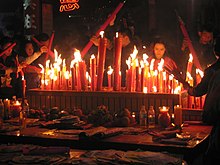

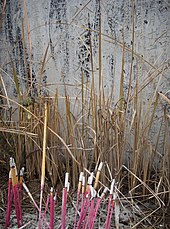
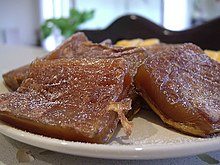


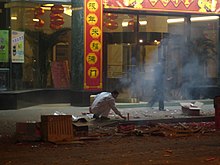

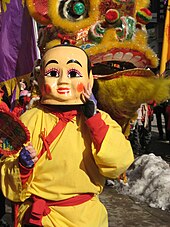

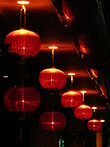
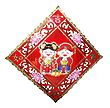




Walang komento:
Mag-post ng isang Komento